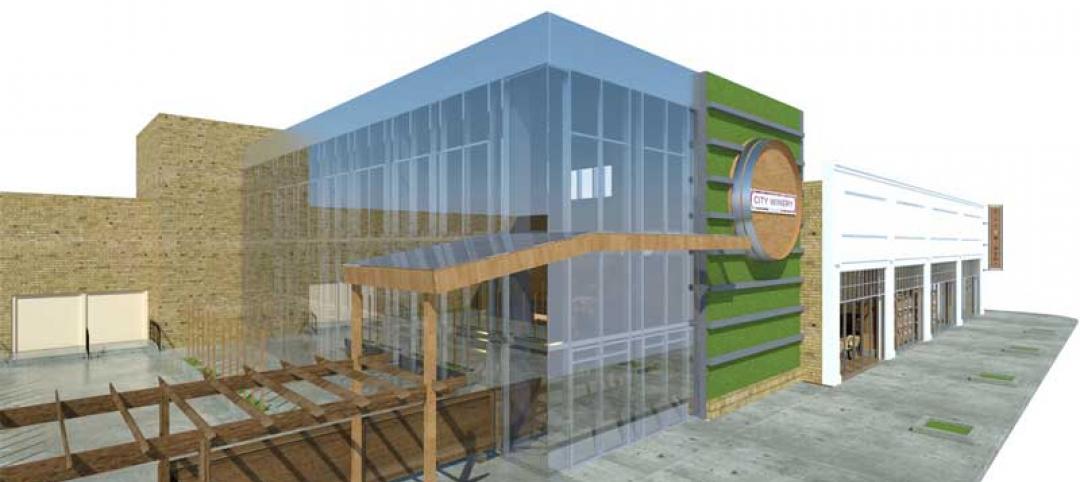Conventional windows have long been considered the weak link in the building envelope. According to the U.S. Department of Energy’s Building Technologies Program Multi-Year Program Plan 2011-2015, approximately 4.4 quadrillion Btu of energy in the U.S. is lost through windows in the form of heating and air-conditioning loads.
The DOE plan suggests that regardless of orientation or climate, window systems have the potential to outperform the best-insulated wall or roof in terms of annual energy performance, peak demand reduction, and cost.
UNIVERSITY FINDS A SOLUTION TO INEFFICIENT WINDOWS
The University of Minnesota’s Folwell Hall, a fixture on the National Register of Historic Places, recently underwent three years of extensive renovation.
Before the renovation, students, staff, and faculty who met in Folwell Hall were at the mercy of wildly fluctuating temperatures caused by outdated, inefficient windows, and an antiquated HVAC system.
The Building Team of Miller Dunwiddie Architects and construction manager McGough Construction, both of Minneapolis, set out to remedy this problem by replacing 400 existing windows with energy-efficient units. In order to meet state sustainability guidelines, window distributor National Window Associates Inc., Rogers, Minn., recommended Kolbe’s Ultra Series Sterling double-hung units with standard LoE2-270 double-pane insulating glass.
“Two of the main goals for Folwell Hall were to protect its historic significance and improve its energy efficiency,” says Denita Lemmon, AIA, project manager with Miller Dunwiddie. “The window system met both the aesthetic and performance specifications.”
In the 1980s, Folwell Hall’s century-old wood windows had been replaced with a basic aluminum system, which hid some of the historic architectural details. The replacement window system integrated aluminum-clad windows with custom aluminum panning to replicate the original architectural vision.
“To retain as much of the historical nature of the window openings, the interior trim was left in place,” says Tim Mahanna, project superintendent with McGough Construction.
The renovation of Folwell Hall was completed in August 2011. In addition to the new windows, the building’s HVAC system was updated to create an energy-efficient, temperature-controlled environment year-round. According to University of Minnesota officials, the indoor environment in Folwell Hall has been dramatically improved in terms of the HVAC, acoustics, and comfort.
COMMERCIAL RETROFIT KEEPS NOISE, ENERGY LOSS LOW
The 400 Market Street building in Philadelphia is an example of one of the countless buildings in the U.S. that are 30-60 years old where reglazing for aesthetic, environmental, or practical reasons is called for.
Constructed in 1972, the 12-story building is owned and managed by local property firm Kaiserman Co. As energy costs rose, along with tenant complaints regarding street noise, Kaiserman opted to install the Renovate by Berkowitz window retrofit system.
Glass fabricator J.E. Berkowitz manufactures an on-site window retrofit system that converts existing single-pane windows into energy-saving, triple-glazed insulating glass units. The retrofit system costs about 50% less than ripping out and replacing old windows.
Carolyn Pfeiffer, property manager of 400 Market Street, says the investment in the retrofit system is already paying dividends beyond cost and energy savings.
“Even without the energy savings, we’ve received positive feedback from our tenants, who are pleased with how much quieter and more comfortable the building is,” says Pfeiffer. The installation team worked with the tenants to minimize disruption to their workplace. “This not only made the tenants happy, but saved time and the cost of relocating them as well,” she says.
The retrofit took about 50 working days. In comparison, a traditional rip-out/replace project can take between 100-150 days for a similar 12-story structure.
AESTHETICS, THERMAL PERFORMANCE APPEAL TO MIDDLE SCHOOL
Beaty-Warren Middle School in Warren, Pa., recently completed an extensive renovation to update the 80-year-old facility. In addition to numerous structural and aesthetic updates, more than 300 high-performance, energy-efficient windows were installed.
Contractor Architectural Windows Concepts, Export, Pa., was given a six-month schedule to remove the existing windows and replace them with windows manufactured by Wausau Windows and Wall Systems.
Originally designed in 1930, the school experienced three building expansions to accommodate a growing student population. During each reconstruction phase, the windows were replaced on an as-needed basis, resulting is dissimilar styles and performance.
In 2010, the Warren County School District voted to replace the school’s windows and selected Hallgren, Restifo, Loop & Coughlin Architects, Erie, Pa., to design the reconstruction project.
“Our goal was to bring back the original intent and character of the building’s design,” says Chris Coughlin, lead architect. “We knew the windows would be an important piece to anchor the original design aesthetic and tie together the building’s many additions.”
Among the difficulties was creating profiles for more than 65 different window sizes and replicating the original shapes and colors of the window frames.
Mimicking the look of the school’s original windows, Wausau’s INvent Series units were fabricated for Beaty-Warren with a beveled face, muntin grids, and custom panning. Offset glass panes replicate the historic double-hung sash while offering easy operation, weatherability, and performance. The window’s triple-glazed, high thermal performance contributes to both the environmental and financial goals of the school. Following installation, interior temperatures at the school increased an average of 4-5 degrees Fahrenheit in the classrooms during the winter heating season. In the warmer months, the windows can be opened for natural ventilation.
To manage daylight, the windows were installed with one-inch, between-glass blinds. This allows staff to control glare, which may be evident on computer screens.
“Our office is very pleased with the design aesthetic,” says Coughlin. “The windows reflect the aesthetics that would be expected on a school from this particular era, yet add the performance we expect today.” +
Related Stories
| Apr 24, 2012
Roofing Supply Group acquired by Clayton, Dubilier & Rice
RSG provides a complete offering of residential and commercial roofing materials and related supplies.
| Apr 24, 2012
McLennan named Ashoka Fellow
McLennan was recognized for his work on the Living Building Challenge.
| Apr 24, 2012
AECOM design and engineering team realizes NASA vision for Sustainability Base
LEED Platinum facility opens at NASA Ames Research Center at California’s Moffett Field.
| Apr 23, 2012
Vegas’ CityCenter called financial ‘black hole’
Two and a half years ago, stockholders filed six lawsuits after the stock price fell from $99.75 on Oct. 9, 2007, to $1.89 on March 5, 2009. Bondholders sued over similar steep losses.
| Apr 23, 2012
Innovative engineering behind BIG’s Vancouver Tower
Buro Happold’s structural design supports the top-heavy, complex building in a high seismic zone; engineers are using BIM technology to design a concrete structure with post-tensioned walls.
| Apr 23, 2012
AAMA releases updated specification for anodized aluminum
AAMA 611-12 describes test procedures and requirements for high performance (Class I) and commercial (Class II) architectural quality aluminum oxide coatings applied to aluminum extrusions and panels for architectural products.
| Apr 23, 2012
Thornton Tomasetti project wins AISC Merit Award
Thornton Tomasetti provided structural design services through construction administration to architect HOK for the 1.6-million-sf tower and tiara structure, which comprises 15 steel tube arches spanning approximately 158 feet horizontally and 130 feet vertically from the top of the main building roof.
| Apr 23, 2012
Construction underway on City Winery Chicago
The Building Team is maintaining the old brick and timber construction, while adding 5,000-sf of new construction in the form of a two-story addition within the site’s existing courtyard.
| Apr 20, 2012
McCarthy completes Santa Barbara Cottage Hospital Replacement Facility
The new hospital’s architectural design combines traditional Santa Barbara Spanish colonial architecture with 21st century medical conveniences highlighted by a therapeutic and sustainable atmosphere.
| Apr 20, 2012
Century-old courthouse renovated for Delaware law firm offices
To account for future expansion, Francis Cauffman developed a plan to accommodate the addition of an 8-story tower to the building.

















